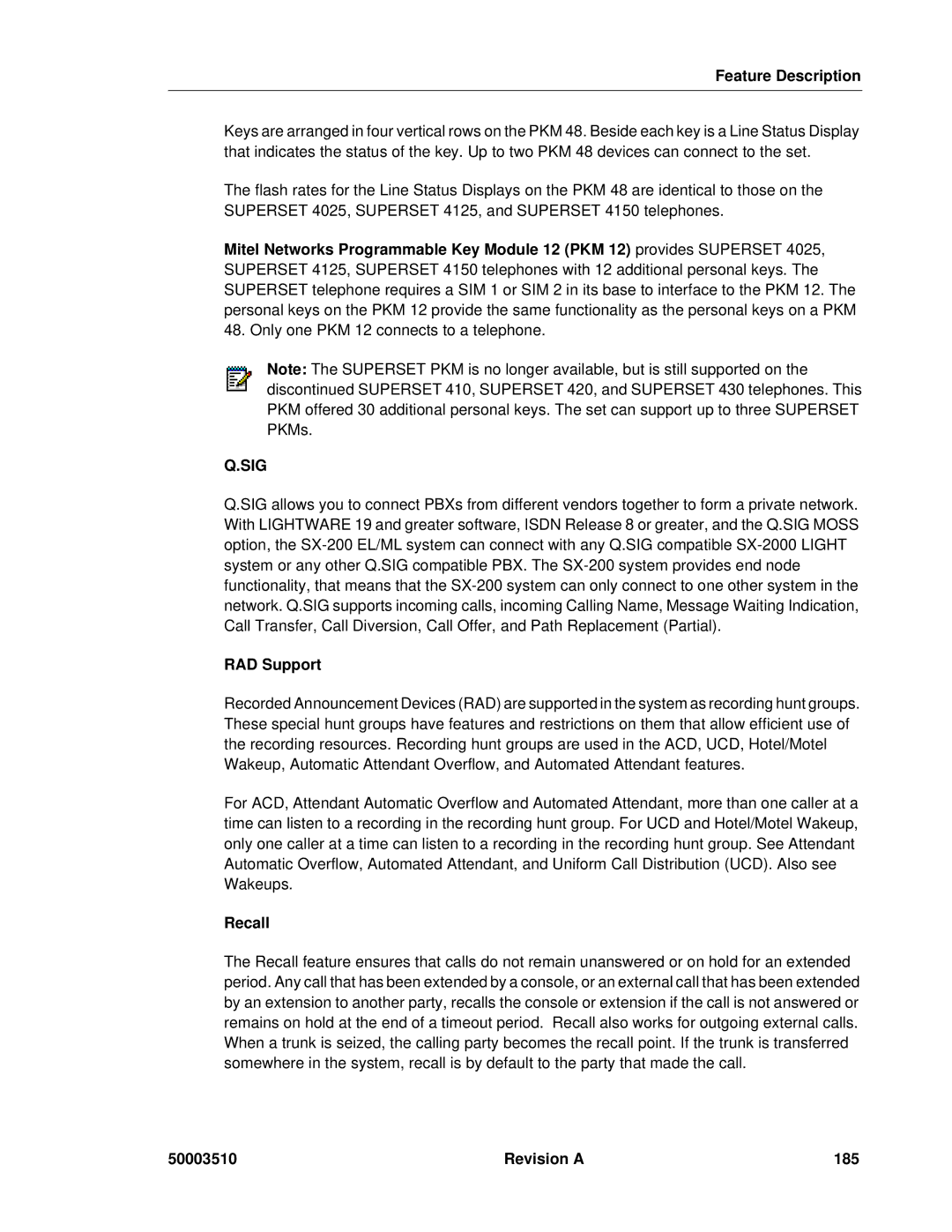sx-200, SX-2000 specifications
Mitel SX-2000 is a versatile telecommunications system designed to cater to the communication needs of both large enterprises and smaller organizations. Known for its scalability and robust features, the SX-2000 offers a comprehensive solution for voice communications, making it a preferred choice in various sectors including healthcare, education, and corporate environments.One of the distinguishing characteristics of the Mitel SX-2000 is its modular architecture. This design allows organizations to expand their system as needed, adding components such as additional trunk lines, user extensions, and various telephony features without a complete overhaul of their existing infrastructure. This adaptability is a significant advantage for businesses anticipating future growth or evolving needs.
The SX-2000 supports a diverse range of telephony protocols and technologies, including traditional analog and digital interfaces, as well as Voice over IP (VoIP). This flexibility enables seamless integration with existing equipment and the incorporation of modern communication technologies. It supports both TDM and IP technology, allowing organizations to bridge their legacy systems with new VoIP solutions, providing a cost-effective avenue for upgrades.
Key features of the Mitel SX-2000 include advanced call handling capabilities, such as call routing, queuing, and conferencing. The system can manage both inbound and outbound calls efficiently, ensuring that communication flows smoothly within the organization. Furthermore, the SX-2000 allows for advanced voicemail systems, automated attendants, and integration with CRM applications, enhancing productivity and customer service.
In terms of user experience, the system offers a variety of end-user devices, including digital and IP phones, which come equipped with intuitive interfaces. These devices offer features like programmable keys, speakerphone capabilities, and support for unified communications, allowing users to manage their calls effectively.
Security is a significant aspect of any telecommunications system, and Mitel has incorporated layers of security protocols in the SX-2000. This includes encryption for VoIP calls and secure access controls to safeguard sensitive communications.
In summary, the Mitel SX-2000 is a robust telecommunications solution that provides extensive flexibility, scalability, and advanced features. Its ability to integrate with various technologies and support a wide range of user needs makes it an ideal choice for organizations looking to enhance their communication infrastructure. With ongoing advancements in telecommunications technology, the SX-2000 remains a relevant and powerful tool for effective communication.

